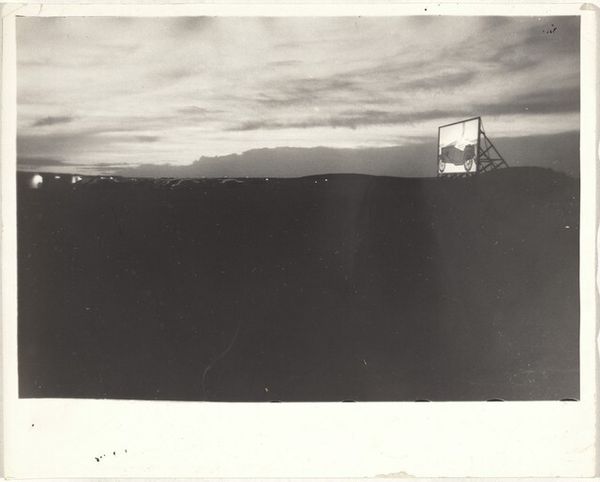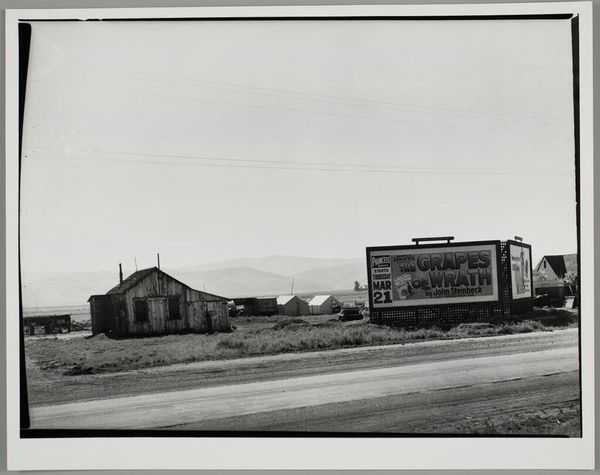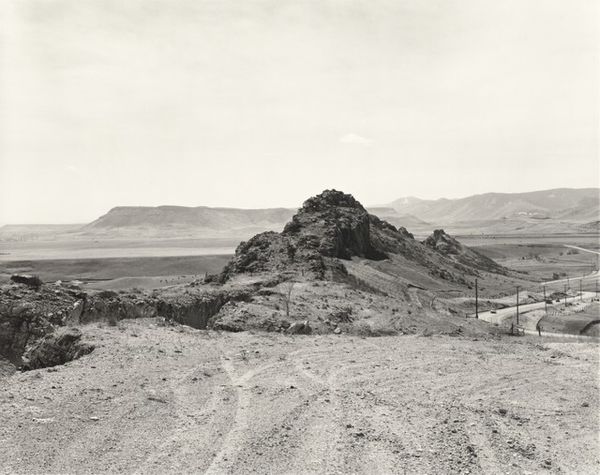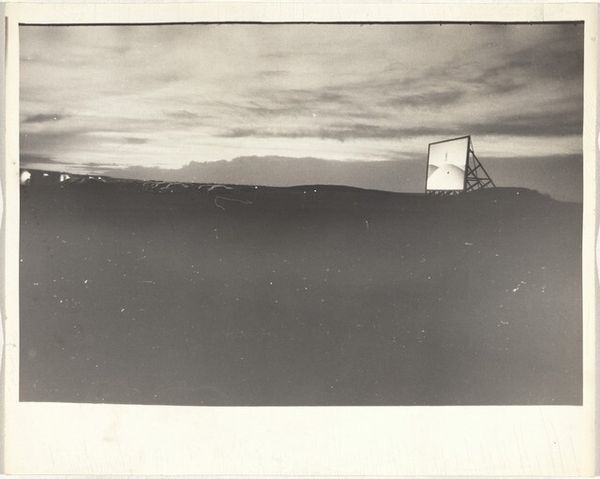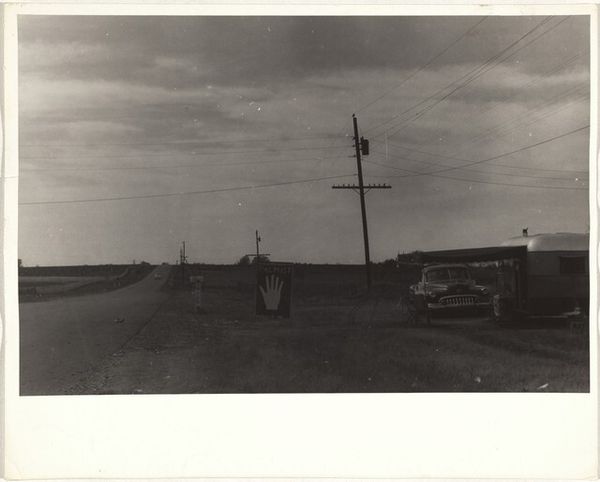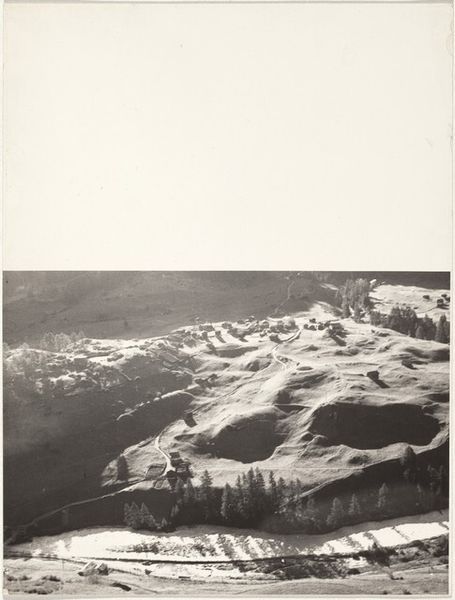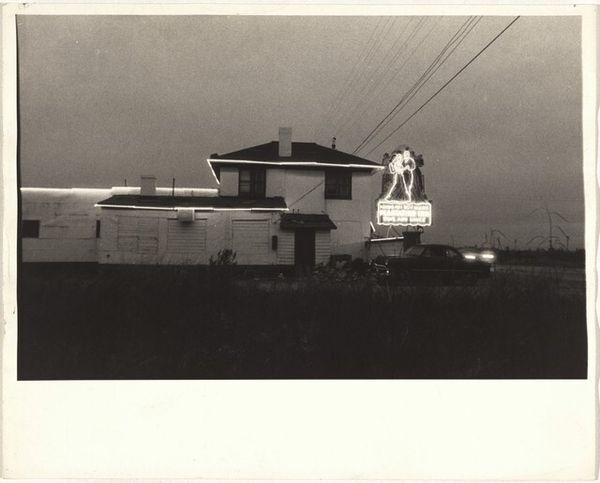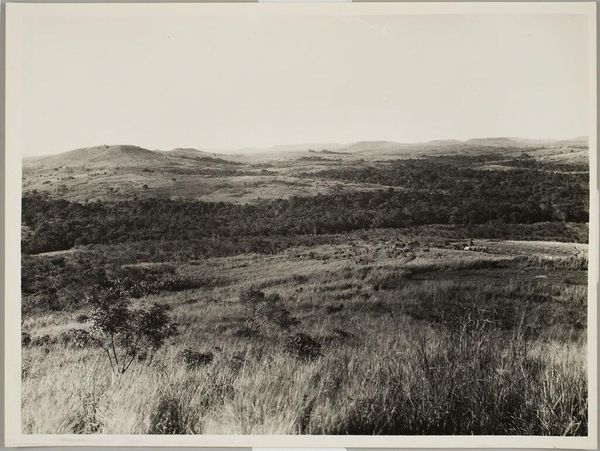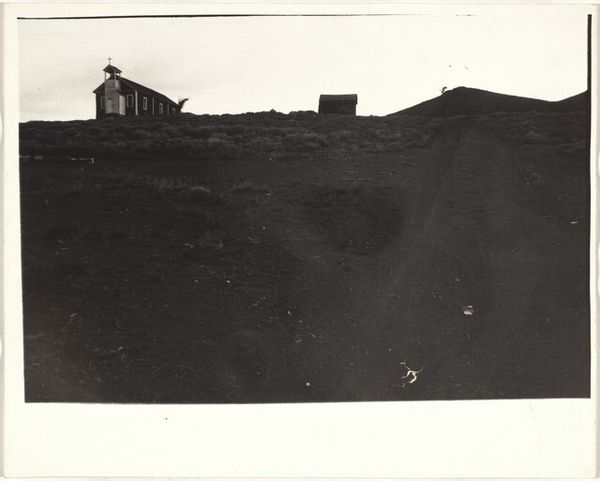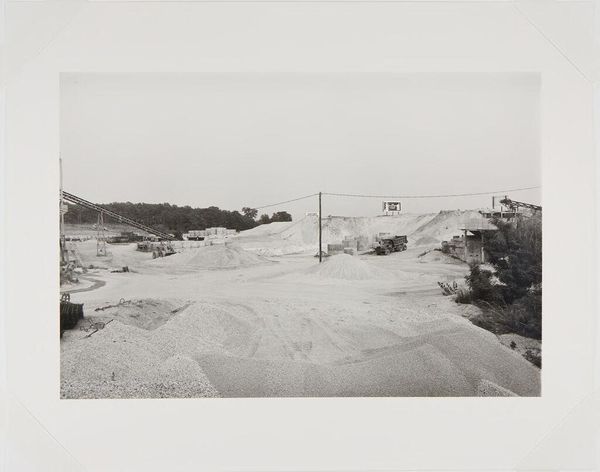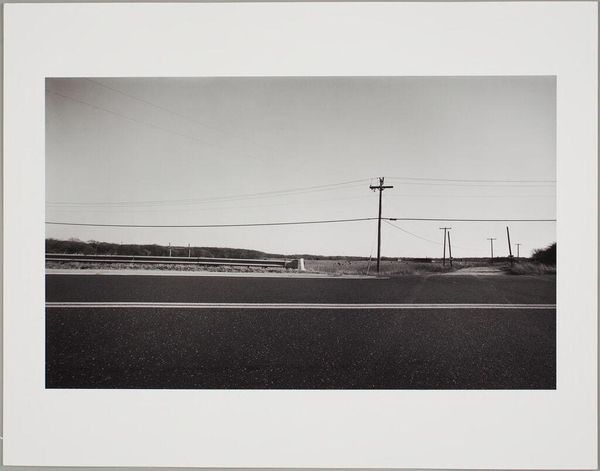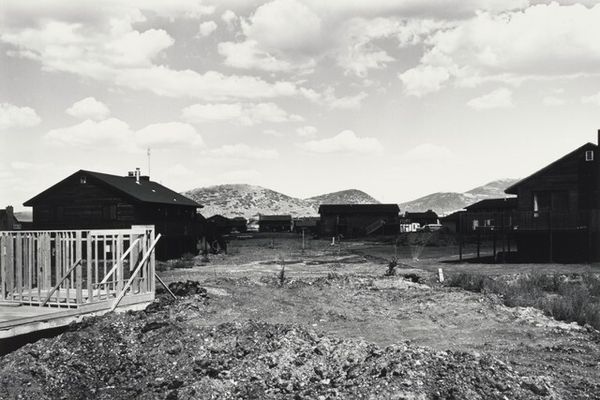
print, photography, gelatin-silver-print
#
print photography
#
still-life-photography
# print
#
wedding photography
#
landscape
#
outdoor photo
#
street-photography
#
photography
#
gelatin-silver-print
#
monochrome photography
#
pop-art
#
realism
#
monochrome
Dimensions: sheet: 20.2 x 25.2 cm (7 15/16 x 9 15/16 in.)
Copyright: National Gallery of Art: CC0 1.0
Curator: Well, this photograph is titled "Sign, 'The Pit-B-Q'--New Mexico," taken by Robert Frank in 1955. It’s a gelatin silver print. What’s your initial read? Editor: Stark. That bleached sky and the empty road leading to the horizon… it evokes a palpable sense of desolation, despite the advertisement. Curator: Indeed. Frank was deeply interested in documenting the evolving American landscape, specifically in the post-war period. You see the effects of mass production and burgeoning consumer culture. Think of the raw materials, the ink for that sign, the metal it's constructed from... Editor: It also highlights how roadside signage became such a ubiquitous part of that landscape, and how businesses engaged with this medium to attract consumers. You have a restaurant trying to entice travelers with barbeque, coca-cola, hot lunch, and steaks. There's the pit, and behind that, you see some trucks of working individuals that provide us an outlook on social classes. Curator: The material conditions underpinning that imagery. Who had access to those meals and refreshments and under what terms? It provokes questions about economic stratification. We need to acknowledge that this image is carefully crafted—it isn't a simple snapshot of daily life. Editor: Certainly. Frank was making choices. That slightly off-kilter perspective, that stark contrast… the formal aspects create a feeling of unease. These images entered public awareness as part of "The Americans" at a moment of social unease, influencing generations of photographers. It shaped perceptions of a certain postwar mood. Curator: The sign becomes not just a marker of a roadside eatery, but also a marker of a certain social and economic condition. We can almost trace the industrial supply chains that delivered both the Coca-Cola and the very notion of a curated American Dream. Editor: Precisely. Thinking about the gallery space, how does it re-contextualize this photo? It allows the audience to analyze an artifact embedded in time while simultaneously making us consider where and how we receive this cultural history. Curator: A poignant reflection, really. It pushes me to consider the tangible foundations of this visual story – all these intertwined networks and production methods—not to forget the economic realities captured within the photographic chemicals themselves. Editor: And for me, it's the continuous loop, right? How the art itself continues to circulate within its original milieu—fueling perception and expectation within evolving societal structures.
Comments
No comments
Be the first to comment and join the conversation on the ultimate creative platform.
